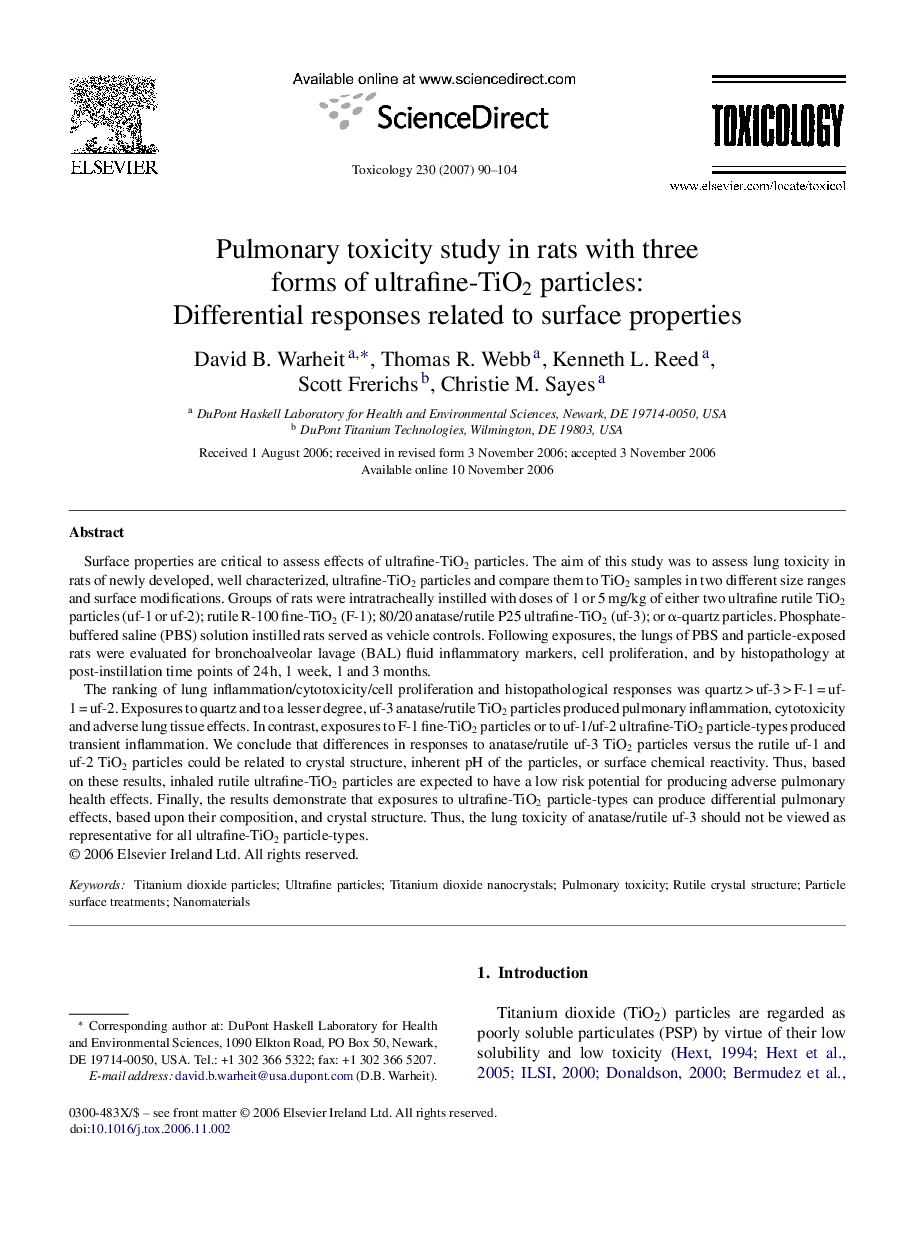| Article ID | Journal | Published Year | Pages | File Type |
|---|---|---|---|---|
| 2598130 | Toxicology | 2007 | 15 Pages |
Surface properties are critical to assess effects of ultrafine-TiO2 particles. The aim of this study was to assess lung toxicity in rats of newly developed, well characterized, ultrafine-TiO2 particles and compare them to TiO2 samples in two different size ranges and surface modifications. Groups of rats were intratracheally instilled with doses of 1 or 5 mg/kg of either two ultrafine rutile TiO2 particles (uf-1 or uf-2); rutile R-100 fine-TiO2 (F-1); 80/20 anatase/rutile P25 ultrafine-TiO2 (uf-3); or α-quartz particles. Phosphate-buffered saline (PBS) solution instilled rats served as vehicle controls. Following exposures, the lungs of PBS and particle-exposed rats were evaluated for bronchoalveolar lavage (BAL) fluid inflammatory markers, cell proliferation, and by histopathology at post-instillation time points of 24 h, 1 week, 1 and 3 months.The ranking of lung inflammation/cytotoxicity/cell proliferation and histopathological responses was quartz > uf-3 > F-1 = uf-1 = uf-2. Exposures to quartz and to a lesser degree, uf-3 anatase/rutile TiO2 particles produced pulmonary inflammation, cytotoxicity and adverse lung tissue effects. In contrast, exposures to F-1 fine-TiO2 particles or to uf-1/uf-2 ultrafine-TiO2 particle-types produced transient inflammation. We conclude that differences in responses to anatase/rutile uf-3 TiO2 particles versus the rutile uf-1 and uf-2 TiO2 particles could be related to crystal structure, inherent pH of the particles, or surface chemical reactivity. Thus, based on these results, inhaled rutile ultrafine-TiO2 particles are expected to have a low risk potential for producing adverse pulmonary health effects. Finally, the results demonstrate that exposures to ultrafine-TiO2 particle-types can produce differential pulmonary effects, based upon their composition, and crystal structure. Thus, the lung toxicity of anatase/rutile uf-3 should not be viewed as representative for all ultrafine-TiO2 particle-types.
